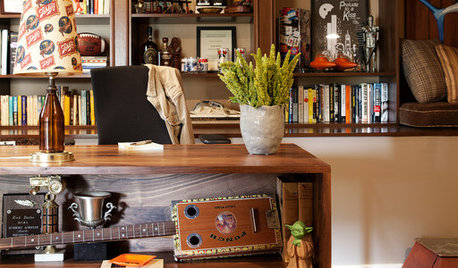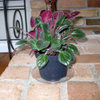Hybridizing Ideas
mwedzi
19 years ago
Related Stories

EDIBLE GARDENSGrow Plum Hybrids for Your Favorite Fruit Flavors
Plums are cozying up with apricots, peaches and even cherries — here’s how to grow these hybrids for the best aspects of each
Full Story
KITCHEN DESIGNTake a Seat at the New Kitchen-Table Island
Hybrid kitchen islands swap storage for a table-like look and more seating
Full Story
MAN SPACESA Los Angeles Basement Becomes a Cozy Man Cave
Raw storage space in a Hollywood writer's home is transformed into a masculine home office hybrid
Full Story
HOMES AROUND THE WORLDEast Meets West in 3 Modern Japanese Homes
Contemporary Japanese houses often mix traditional and Western elements. These hybrids offer the best of both worlds
Full Story
LANDSCAPE DESIGNBoxwood Alternatives Bring the Chelsea Flower Show to You
Don’t let box blight limit your plans to borrow garden design ideas from the renowned British event
Full Story
MOST POPULAREasy Green: 23 Ways to Reduce Waste at Home
Pick from this plethora of earth-friendly ideas to send less to the landfill and keep more money in your pocket
Full Story
KITCHEN DESIGNDesign an Easy-Clean Kitchen
"You cook and I'll clean" might no longer be a fair trade with these ideas for low-maintenance kitchen countertops, cabinets and floors
Full Story
FUN HOUZZWhat Could You Imagine With Lego's New Architecture Kit?
Go ahead, toy around with wild building ideas. With 1,210 all-white blocks at your disposal, it's OK to think big
Full Story
URBAN GARDENS9 Urban Gardening Tips From Hong Kong Rooftops
Create a refuge from city chaos with these ideas gathered from rooftops as practical as they are picturesque
Full Story
HOME OFFICES9 Hacks for a Clutter-Free Home Office
Use these clever ideas to transform a chaotic study into one that’s more conducive to working
Full StorySponsored
Custom Craftsmanship & Construction Solutions in Franklin County
More Discussions







jon_d
mwedziOriginal Author
Related Professionals
Norfolk Landscape Architects & Landscape Designers · Bellflower Landscape Architects & Landscape Designers · Fillmore Landscape Architects & Landscape Designers · Redondo Beach Landscape Architects & Landscape Designers · Bedford Landscape Contractors · Corona Landscape Contractors · Del Aire Landscape Contractors · Longmont Landscape Contractors · Oviedo Landscape Contractors · Wallingford Landscape Contractors · Hawaiian Gardens Landscape Contractors · Kansas City Siding & Exteriors · Panama City Siding & Exteriors · Poway Siding & Exteriors · Western Springs Siding & Exteriorsjon_d
maureen_ottawa
jon_d